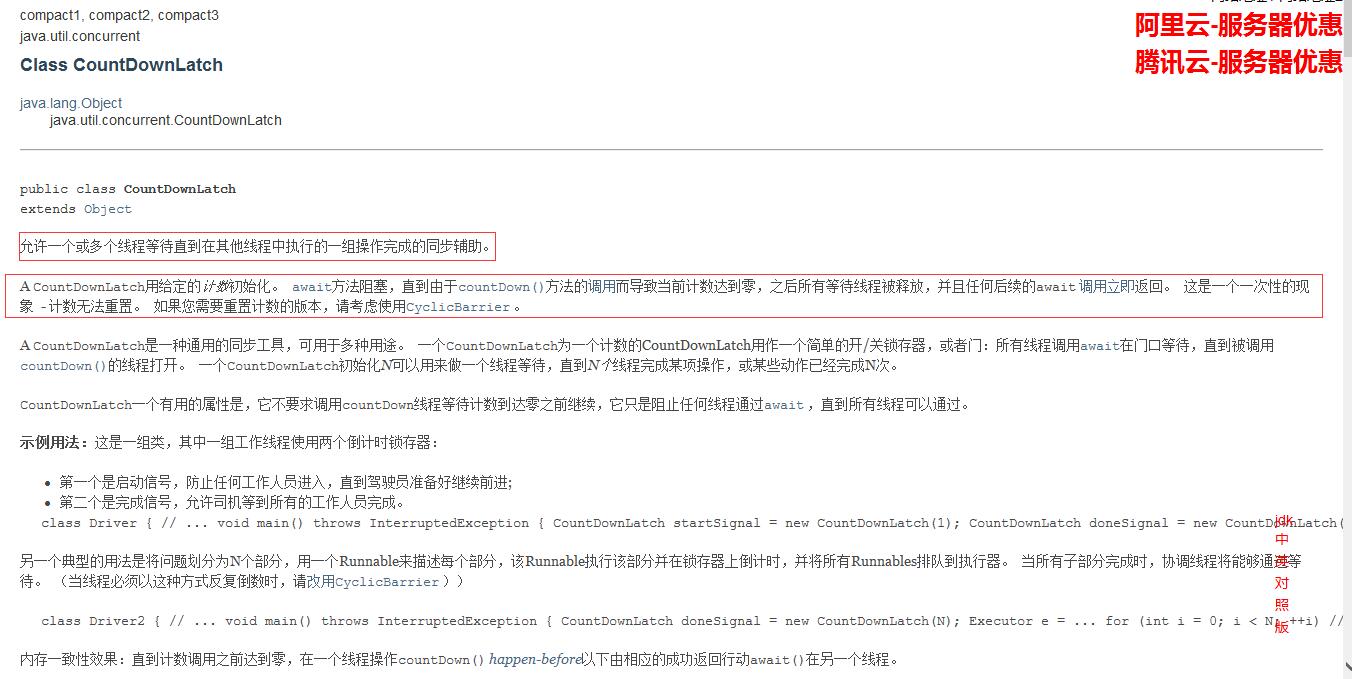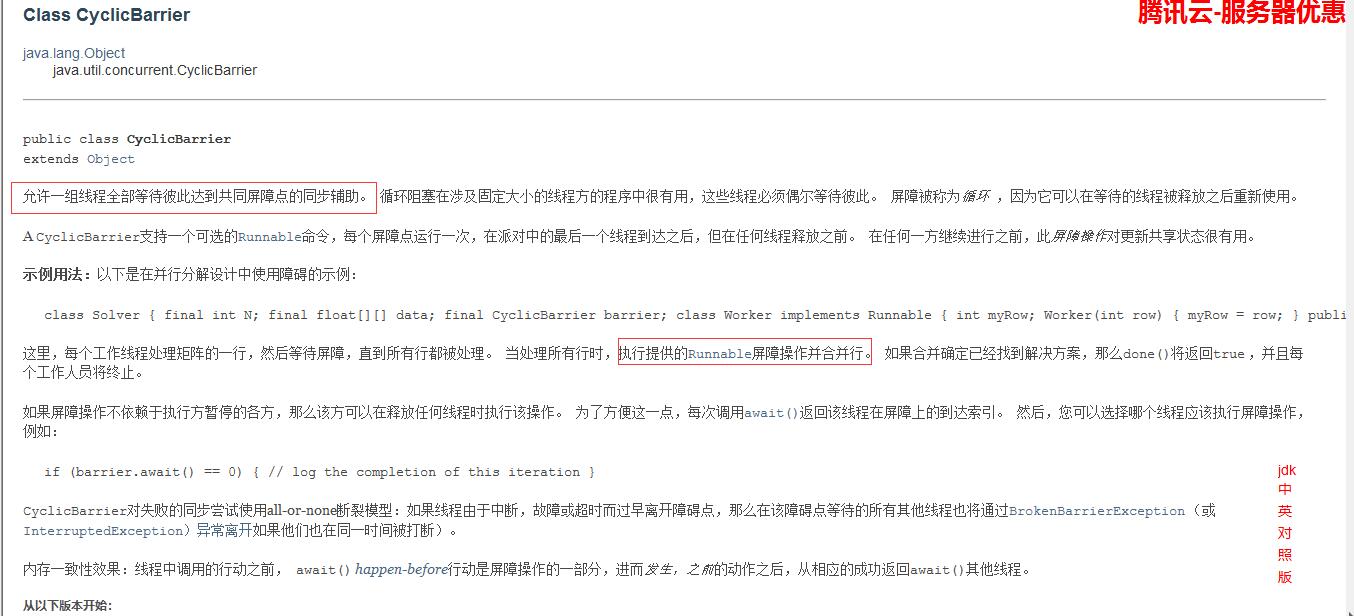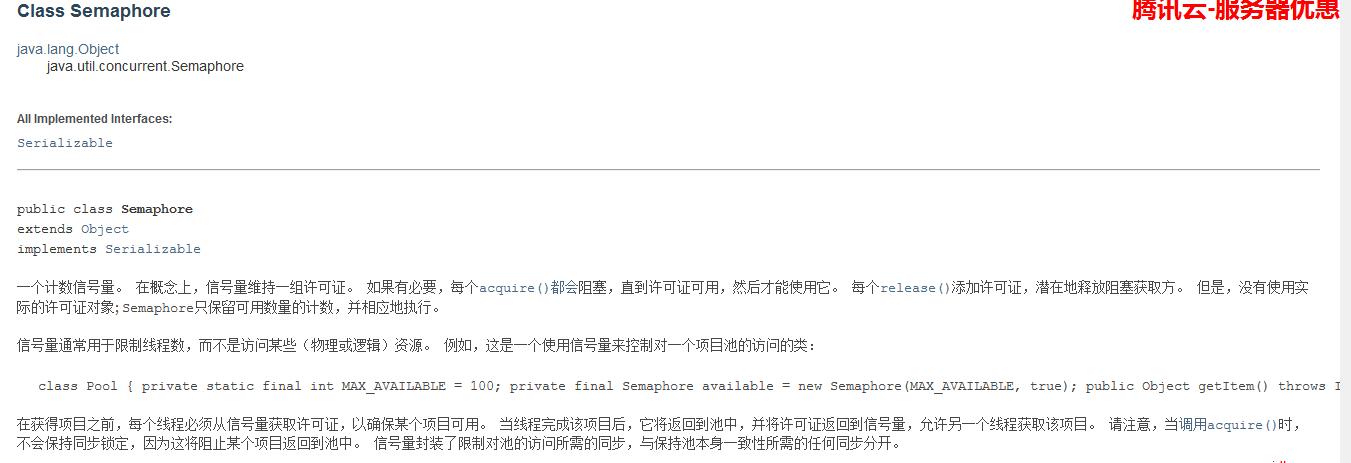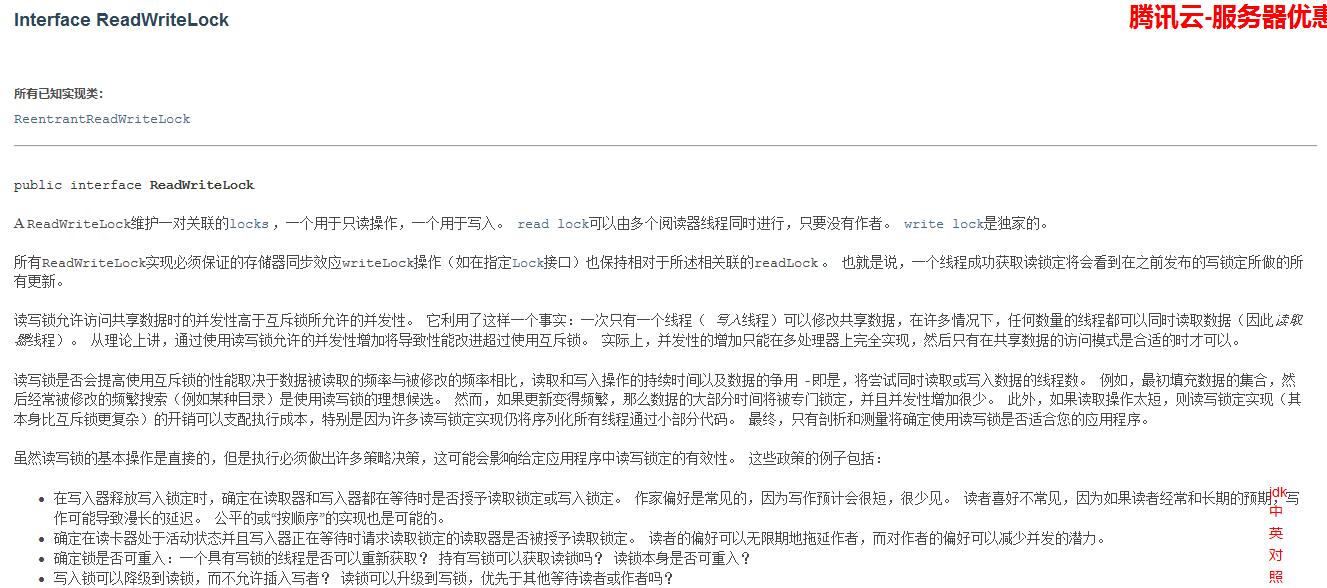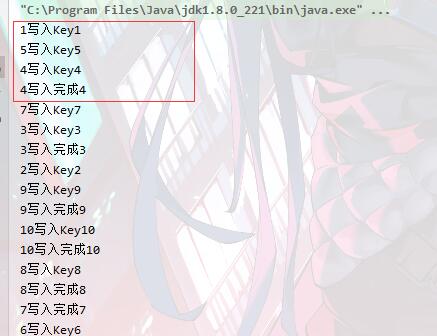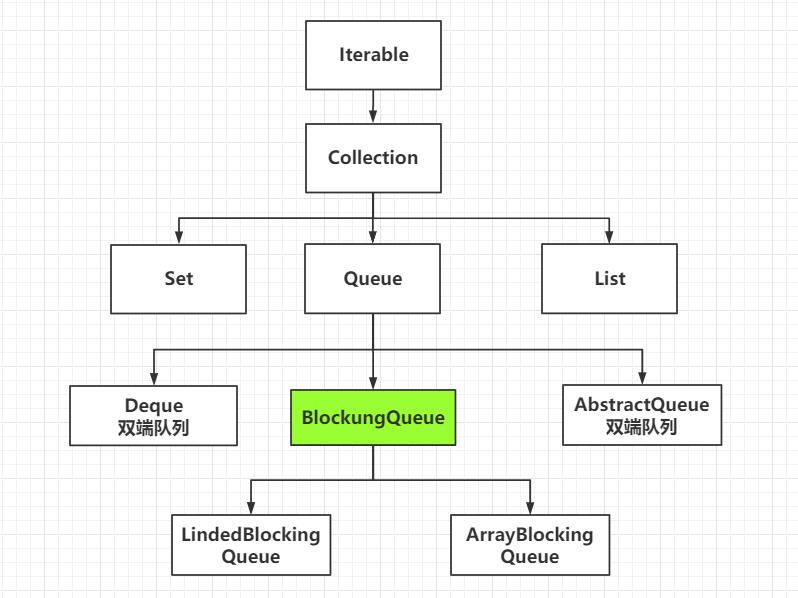JUC并发编程系列(二) 6.八锁问题
1.两个sync 锁的对象是方法的调用者 ,按顺序调用 发短信 打电话
2.发短信休眠4S 依旧一样 按顺序调用
1 2 3 4 5 6 7 8 9 10 11 12 13 14 15 16 17 18 19 20 21 22 23 24 25 26 27 28 29 30 31 32 33 34 35 36 37 /\*\*8 锁,关于锁的8 个问题1. 两个sync 锁的对象是方法的调用者,按顺序调用 发短信 打电话2. 发短信休眠4S 依旧一样 按顺序调用@author 路飞@create 2021 /1 /18 public class Test1 {public static void main (String[] args) {Phone phone = new Phone ();Phone phone1 = new Phone ();new Thread (() -> {"A" ).start();new Thread (() -> {"B" ).start();new Thread (() -> {"C" ).start();class Phone {public synchronized void sendMes () {try {4 );catch (InterruptedException e) {"发短信" );public synchronized void call () {"打电话" );
3.增加一个普通方法,该方法不会受sync的限制,优先执行
4.两个对象,两个同步方法
1 2 3 4 5 6 7 8 9 10 11 12 13 14 15 16 17 18 19 20 21 22 23 24 25 26 27 28 29 30 31 32 33 34 35 36 37 38 39 40 41 42 43 /\*\*3. 增加一个普通方法 该方法不受同步锁限制 会先执行4. 两个对象 两个同步方法@author 路飞@create 2021 /1 /18 public class Test2 {public static void main (String[] args) {Phone2 phone1 = new Phone2 ();Phone2 phone2 = new Phone2 ();new Thread (() -> {"A" ).start();try {1 );catch (InterruptedException e) {new Thread (() -> {"B" ).start();class Phone2 {public synchronized void sendMes () {try {4 );catch (InterruptedException e) {"发短信" );public synchronized void call () {"打电话" );public void sayHello () {"=====>hello" );
注意:
5.两个静态sync方法,一个对象去调用
6.两个静态sync方法,两个对象去调用
1 2 3 4 5 6 7 8 9 10 11 12 13 14 15 16 17 18 19 20 21 22 23 24 25 26 27 28 29 30 31 32 33 34 35 36 37 38 39 40 /\*\*5. 增加两个静态方法 一个对象 发短信 打电话6. 两个对象 两个静态的同步方法 发短信 打电话@author 路飞@create 2021 /1 /18 public class Test3 {public static void main (String[] args) {Phone3 phone1 = new Phone3 ();Phone3 phone2 = new Phone3 ();new Thread (() -> {"A" ).start();try {1 );catch (InterruptedException e) {new Thread (() -> {"B" ).start();class Phone3 {public static synchronized void sendMes () {try {4 );catch (InterruptedException e) {"发短信" );public static synchronized void call () {"打电话" );
注意:
7.一个静态的同步方法,一个普通的同步方法 一个对象 打电话 发短信
8.一个静态的同步方法,一个普通的同步方法 两个个对象 打电话 发短信
1 2 3 4 5 6 7 8 9 10 11 12 13 14 15 16 17 18 19 20 21 22 23 24 25 26 27 28 29 30 31 32 33 34 35 36 37 38 /\*\*7. 一个静态的同步方法 一个普通的同步方法 一个对象 打电话 发短信8. 一个静态的同步方法 一个普通的同步方法 两个对象 打电话 发短信@author 路飞@create 2021 /1 /18 public class Test4 {public static void main (String[] args) {Phone4 phone1 = new Phone4 ();Phone4 phone2 = new Phone4 ();new Thread (() -> {"A" ).start();try {1 );catch (InterruptedException e) {new Thread (() -> {"B" ).start();class Phone4 {public static synchronized void sendMes () {try {4 );catch (InterruptedException e) {"发短信" );public synchronized void call () {"打电话" );
注意:
类锁和对象锁互不干扰,由于sendMes() 是类锁,要等4秒,而call()和它不是一类锁,所以先执行。
总结:
1、当一个线程试图访问同步代码块时,它首先必须得到锁,退出或抛出异常时必须释放锁。
2、Java 中的每一个对象都可以作为锁;普通同步方法锁 this,静态同步方法锁 Class ,同步方法块锁括号;
3、只要锁的对象不是同一个 ,就直接按照线程执行的快慢来决定 ;锁的对象是同一个 ,就按照线程进入的先后顺序决定 。
7.集合类不安全
List不安全
1 2 3 4 5 6 7 8 9 10 11 12 13 14 15 16 17 18 19 20 21 22 23 24 25 26 27 28 29 30 /\*\*@author 路飞@create 2021 /1 /18 public class ListTest {public static void main (String[] args) {1. new Vector () 线程安全2. Collections.synchronizedList(new ArrayList <>());3. new CopyOnWriteArrayList <>();new Vector <>();for (int i = 0 ; i <= 10 ; i++) {new Thread (() -> {0 , 5 ));
Map不安全
1 2 3 4 5 6 7 8 9 10 11 12 13 14 15 16 17 18 19 20 21 22 23 24 25 26 27 /\*\*@author 路飞@create 2021 /1 /18 public class MapTest {public static void main (String[] args) {1. Collections.synchronizedMap(new HashMap <>());2. new ConcurrentHashMap <>();new ConcurrentHashMap <>();for (int i = 0 ; i < 10 ; i++) {new Thread (() -> {0 , 5 ));
HashMap面试绝对会问底层实现和如何插入重复key,后面会单独写一篇关于HashMap的文章!
Set测试
1 2 3 4 5 6 7 8 9 10 11 12 13 14 15 16 17 18 19 20 21 22 23 24 25 26 /\*\*@author 路飞@create 2021 /1 /18 public class SetTest {public static void main (String[] args) {1. Collections.synchronizedSet(new HashSet <>());2. new CopyOnWriteArraySet <>();new CopyOnWriteArraySet <>();for (int i = 0 ; i < 10 ; i++) {new Thread (() -> {0 , 5 ));
hashSet底层是什么?
1 2 3 4 5 6 7 8 9 10 11 12 13 14 15 16 17 18 19 20 21 22 23 24 25 26 27 28 29 30 31 32 33 34 35 36 37 38 39 40 41 42 43 44 45 46 47 48 49 50 51 52 53 54 55 56 57 58 59 60 61 62 63 64 65 66 67 68 69 70 71 72 73 74 75 76 77 78 79 80 81 82 83 84 85 86 87 88 89 90 91 92 93 94 95 96 97 98 99 100 101 102 103 104 105 106 107 108 109 110 111 112 113 114 115 116 117 118 private transient HashMap<E,Object> map;private static final Object PRESENT = new Object ();new , empty set; the backing <tt>HashMap</tt> instance hasdefault initial capacity (16 ) and load factor (0.75 ) .public HashSet () {new HashMap <>();new set containing the elements in the specifieddefault load factor0.75 ) and an initial capacity sufficient to contain the elements in@param c the collection whose elements are to be placed into this set@throws NullPointerException if the specified collection is null public HashSet (Collection<? extends E> c) {new HashMap <>(Math.max((int ) (c.size()/.75f ) + 1 , 16 ));new , empty set; the backing <tt>HashMap</tt> instance has@param initialCapacity the initial capacity of the hash map@param loadFactor the load factor of the hash map@throws IllegalArgumentException if the initial capacity is lessif the load factor is nonpositivepublic HashSet (int initialCapacity, float loadFactor) {new HashMap <>(initialCapacity, loadFactor);new , empty set; the backing <tt>HashMap</tt> instance hasdefault load factor (0.75 ) .@param initialCapacity the initial capacity of the hash table@throws IllegalArgumentException if the initial capacity is lesspublic HashSet (int initialCapacity) {new HashMap <>(initialCapacity);new , empty linked hash set. (This package private @param initialCapacity the initial capacity of the hash map@param loadFactor the load factor of the hash map@param dummy ignored (distinguishes this \* constructor from other int , float constructor.) @throws IllegalArgumentException if the initial capacity is lessif the load factor is nonpositiveint initialCapacity, float loadFactor, boolean dummy) {new LinkedHashMap <>(initialCapacity, loadFactor);this set. The elements@return an Iterator over the elements in this set@see ConcurrentModificationExceptionpublic Iterator<E> iterator () {return map.keySet().iterator();this set (its cardinality) .@return the number of elements in this set (its cardinality) public int size () {return map.size();true </tt> if this set contains no elements.@return <tt>true </tt> if this set contains no elementspublic boolean isEmpty () {return map.isEmpty();true </tt> if this set contains the specified element.true </tt> if and only if this setnull ? e==null : o.equals(e))</tt>.@param o element whose presence in this set is to be tested@return <tt>true </tt> if this set contains the specified elementpublic boolean contains (Object o) {return map.containsKey(o);this set if it is not already present.this set if this set contains no element <tt>e2</tt> such thatnull ? e2==null : e.equals(e2))</tt>.this set already contains the element, the call leaves the setfalse </tt>.@param e element to be added to this set@return <tt>true </tt> if this set did not already contain the specifiedpublic boolean add (E e) {return map.put(e, PRESENT)==null ;
8.常用辅助类 8.1.CountDownLatch
JDK1.8官方文档已经说的很清楚了,CountDownLatch起一个线程同步辅助的作用,类似一个计数器,已经给出示例代码,我们可以写测试:
1 2 3 4 5 6 7 8 9 10 11 12 13 14 15 16 17 18 19 20 /\*\*@author 路飞@create 2021 /1 /18 public class CountDownLatchDemo {public static void main (String[] args) throws InterruptedException {CountDownLatch countDownLatch = new CountDownLatch (6 );for (int i = 0 ; i < 6 ; i++) {new Thread (() -> {" Go out" +"当前计数器==>" +countDownLatch.getCount());"Close Door" );
注意:
countDownLatch.countDown(); //数量-1
countDownLatch.await(); //等待计数器归零,然后再向下执行
每次有线程调用 countDown() 数量-1,假设计数器变为0,countDownLatch.await() 就会被唤醒,继续
执行!
8.2.CyclicBarrier
加法计算器
1 2 3 4 5 6 7 8 9 10 11 12 13 14 15 16 17 18 19 20 21 22 23 24 25 26 27 28 29 /\*\*@author 路飞@create 2021 /1 /19 public class CyclicbarrierDemo {public static void main (String[] args) {7 颗龙珠,召唤神龙CyclicBarrier cyclicBarrier = new CyclicBarrier (7 , () -> {"召唤神龙成功!" );for (int i = 1 ; i <= 7 ; i++) {final int temp = i;new Thread (() -> {"拿到" + temp + "龙珠" );try {catch (InterruptedException e) {catch (BrokenBarrierException e) {
测试发现,当线程预期没有达到计数器的初始值时,都会阻塞 ,等待下一个线程,直到满足期望才会执行最终的方法。
8.3.Semaphore 信号量
1 2 3 4 5 6 7 8 9 10 11 12 13 14 15 16 17 18 19 20 21 22 23 24 25 26 27 28 /\*\*@author 路飞@create 2021 /1 /19 public class SemaphoreDemo {public static void main (String[] args) {Semaphore semaphore = new Semaphore (3 );for (int i = 1 ; i <= 6 ; i++) {new Thread (() -> {try {catch (InterruptedException e) {"抢到了车位" );try {3 );"离开了车位" );catch (InterruptedException e) {finally {
结果:
2抢到了车位
可以看到在同一时间,只有三辆车停着的 ,与Semaphore初始值相同,符合预期!
semaphore.acquire() 获得,假设如果已经满了,等待直到被释放为止
semaphore.release() 释放,会将当前的信号量释放+1.然后唤醒等待的线程!
作用:多个共享资源互斥的使用!并发限流,控制最大的线程数!
9.读写锁
可以看到读写锁是把lock更细粒度的分化 ,读可以被多个线程同时读,但写的时候只能一个线程去写
1 2 3 4 5 6 7 8 9 10 11 12 13 14 15 16 17 18 19 20 21 22 23 24 25 26 27 28 29 30 31 32 33 34 35 36 37 38 39 40 41 42 43 44 45 46 47 48 49 50 51 52 53 54 55 56 57 58 59 60 61 62 63 64 65 66 67 68 69 70 71 72 73 74 75 /\*\*@author 路飞@create 2021 /1 /19 public class ReadWriteLockDemo {public static void main (String[] args) {MyCacheLock myCache = new MyCacheLock ();for (int i = 1 ; i <= 10 ; i++) {final int temp = i;new Thread (() -> {"" , temp + "" );for (int i = 1 ; i < 10 ; i++) {final int temp = i;new Thread (() -> {"" );class MyCache {private volatile Map<String, Object> map = new HashMap <>();public void write (String key, Object o) {"写入Key" + key);"写入完成" + key);public void read (String key) {"读取key" + key);"读取成功" + key);class MyCacheLock {private volatile Map<String, Object> map = new HashMap <>();private ReadWriteLock readWriteLock = new ReentrantReadWriteLock ();public void write (String key, Object o) {try {"写入Key" + key);"写入完成" + key);catch (Exception e) {finally {public void read (String key) {try {"读取key" + key);"读取成功" + key);catch (Exception e) {finally {
这里在写测试类的时候,写了两个自定义缓存类,一个不加锁,一个加锁
不加锁的结果如下:
以发现在线程1写入key1的时候,线程5也在写入key5,然后线程4直接就把key4写入完成了,这很明显不符合多线程的要求,很容易出现线程不安全(key1还没写入完成,后面有插队线程执行写入key1,直接就把key1的值覆盖了)。
加如读写锁的结果:
可以看到,写入是时候只有一个线程,必须等该线程写入完毕后,其它线程才能继续写入,保证了线程安全!
10.阻塞队列
阻塞队列的使用场景:并发处理,线程池
学会使用队列的四组API
方法
抛出异常
有返回值,不抛出异常
阻塞等待
等待超时
添加
add
offer
put
offer
移除
remove
poll
take
poll
检查队首元素
element
peek
1 2 3 4 5 6 7 8 9 10 11 12 13 14 15 16 17 18 19 20 21 22 23 24 25 26 27 28 29 30 31 32 33 34 35 36 37 38 39 40 41 42 43 44 45 46 47 48 49 50 51 52 53 54 55 56 57 58 59 60 61 62 63 64 65 66 67 68 69 70 71 72 73 74 75 76 77 78 79 /\*\*@author 路飞@create 2021 /1 /19 public class BlockingQueueDemo {public static void main (String[] args) throws InterruptedException {public static void test1 () {ArrayBlockingQueue blockingQueue = new ArrayBlockingQueue <>(3 );"a" ));"b" ));"c" ));"----------------------" );public static void test2 () {ArrayBlockingQueue blockingQueue = new ArrayBlockingQueue <>(3 );"a" ));"b" ));"c" ));"--------------------------" );public static void test3 () throws InterruptedException {ArrayBlockingQueue blockingQueue = new ArrayBlockingQueue <>(3 );"a" );"b" );"c" );"---------------" );public static void test4 () throws InterruptedException {ArrayBlockingQueue blockingQueue = new ArrayBlockingQueue <>(3 );"a" ));"b" ));"c" ));"----------------------" );
使用这个很简单,和数据结构的队列大同小异。
SynchronousQueue 同步队列
每个插入操作必须等待另一个线程相应的删除操作,反之亦然。 同步队列没有任何内部容量,甚至没有一个容量。
1 2 3 4 5 6 7 8 9 10 11 12 13 14 15 16 17 18 19 20 21 22 23 24 25 26 27 28 29 30 31 32 33 34 35 36 37 /\*\*@author 路飞@create 2021 /1 /19 public class SynchronousQueueDemo {public static void main (String[] args) {new SynchronousQueue <>();new Thread (() -> {try {"put 1" );"1" );"put 2" );"2" );"put 3" );"3" );catch (InterruptedException e) {"T1" ).start();new Thread (() -> {try {3 );"=>" + blockingQueue.take());3 );"=>" + blockingQueue.take());3 );"=>" + blockingQueue.take());catch (InterruptedException e) {"T2" ).start();
